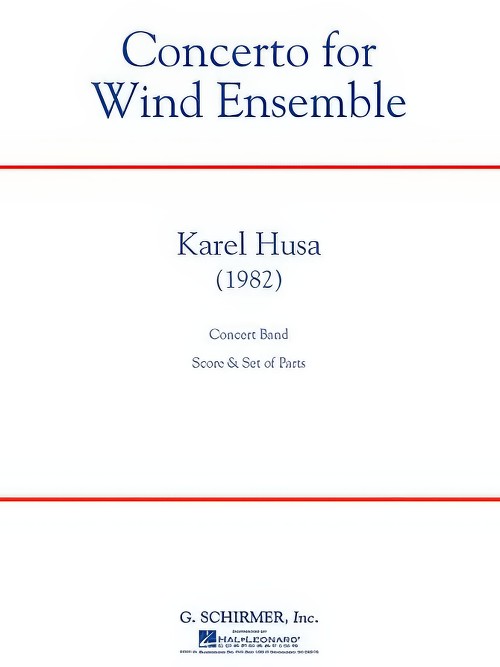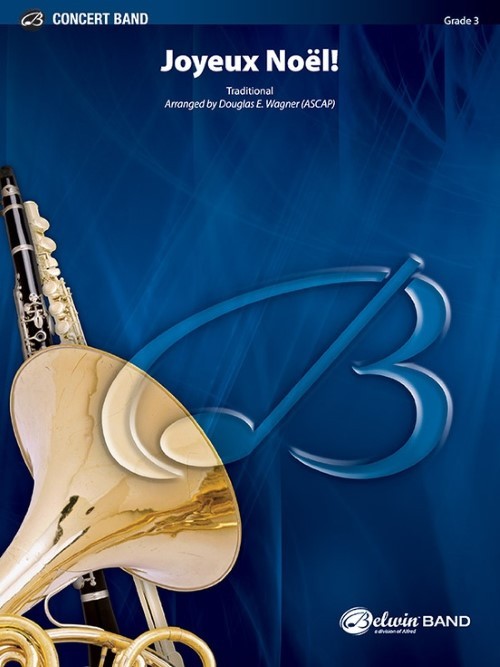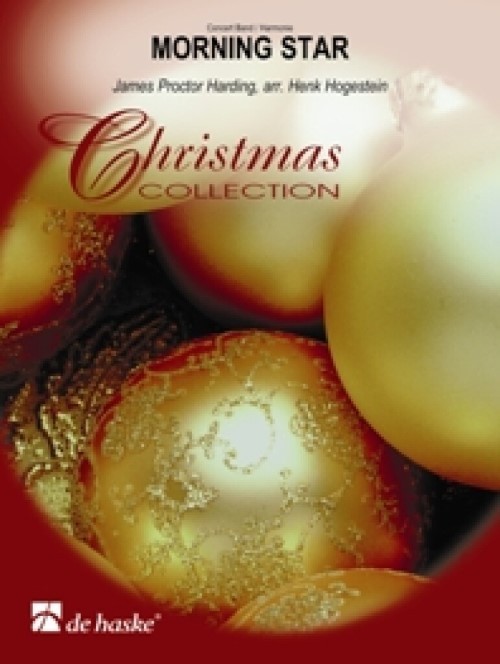Results
-
 £189.99
£189.99Flashback (Concert Band - Score and Parts) - De Haan, Jan
A flashback is an interesting psychological phenomenon: a seemingly random trigger can bring back long-forgotten memories from the subconscious mind. The composer underwent a similar experience before writing this piece. He was asked to write a piece for The National Youth Fanfare Band in the Netherlands, one which he heard perform many years ago. All of a sudden he remembered Deep Harmony, a piece frequently programmed back then. He used his own flashback-experience as an inspiration to weave an old English hymn into his new composition, much like a musical flashback. The right idea at the right moment, as this piece will prove!Duration: 11:00
Estimated dispatch 7-14 working days
-
 £70.50
£70.50Stairway to Heaven (Concert Band - Score and Parts) - Page & Plant - Phillippe, Roy
Stairway to Heaven is a song by the English rock band Led Zeppelin. It was composed by guitarist Jimmy Page and vocalist Robert Plant for the band's fourth studio album, Led Zeppelin IV. It was voted #3 in 2000 by VH1 on their list of the 100 Greatest Rock Songs. It is the most requested and most played song on FM radio stations in the United States, despite never having been released as a single there. Classic rock just never goes bad! This solidly scored arrangement has a driving rock beat that will have your concert band at the top of the charts as well. Duration: 3.45
Estimated dispatch 7-14 working days
-
 £66.95
£66.95Declaration and Flourish (Movement III from the Vaughan Williams Suite) (Concert Band - Score and Parts) - Smith, Robert W.
The final instalment of Robert W. Smith's Vaughan Williams Suite was inspired by both "Flourish for Wind Band" and "English Folk Song Suite." As the title implies, the work is bold and compelling. Consider programming the entire Suite which includes "Wassail" and "Greensleeves: A Fantasia for Band.Duration: 2.45
Estimated dispatch 7-14 working days
-
 £104.99
£104.99Fascination (Concert Band - Score and Parts) - Mashima, Toshio
The melody of Fascination was composed in 1905 by Dante Pilade"Fermo" Marchetti. In the 1930's it was successfully performed in French and English and in 1957 it again became famous when it was used in the soundtrack of the American movie Love in the Afternoon. This piece has been loved by many generations and Toshio Mashima's arrangement will without doubt bring joy to all members of your audience!Duration: 3:30
Estimated dispatch 7-14 working days
-
 £99.99
£99.99Almshouse Street Blues (Concert Band - Score and Parts) - Sparke, Philip
In 2007 Philip Sparke was appointed composer-in-residence to Monmouth School, situated on the Welsh/English border. The school, which has a venerable history dating back to 1614, has a thriving music department which boasts two concert bands, in co-operation with the nearby Haberdashers' Monmouth School for Girls, and a brass band.This exciting and innovative appointment involved three visits by the composer during the year as well as the commissioning of a new piece for each of the bands, all of which were premiered in a concert at the end of the year.Almshouse Street Blues was written for the brass band, whose members were allowed to vote for which type of piece they would get! Monmouth School is based in Almshouse Street and the town has a thriving summer festival which, alongside blues bands, features a wide variety of music including jazz, soul, rock and bangra.Duration: 4.45
Estimated dispatch 7-14 working days
-
 £41.50
£41.50A River Trilogy (Concert Band - Score and Parts) - O'Reilly, John
A River Trilogy provides a wonderful opportunity for first year bands to work on legato style. After an original introduction, the full ensemble plays the African-American spiritual "Deep River." A clarinet and flute duet ushers in the early English folk song "The Water is Wide," and the full band concludes with a lovely treatment of the American classic "Shenandoah."Duration: 2:30
Estimated dispatch 7-14 working days
-
 £141.99
£141.99Concerto for Wind Ensemble (Concert Band - Score and Parts) - Husa, Karel
Commissioned by the Michigan State University Alumni Band, this three movement work by Pulitzer Prize-winning composer Karel Husa was the winner of the first Louis Sudler International Wind Band Composition Competition in 1983. Previously available only in rental, this important work is now available for sale.A note from the composer: Divided into three movements, this work is a display of virtuoso passages given to solo instruments as well as to the groups of the ensemble. In the Fanfare of the first movement, the brass section "concertizes" in groups of four brass quintets (2 trumpets, horn, trombone and tuba or baritone), spread from left to right in back. The saxophones (S, A, T, B) are placed in front of the brass quintets, and the woodwinds occupy the front of the stage, with percussion on the left and right side. These groups, like the brass quintets, play in the concertante style, particularly in the first and last movements. At the same time, each movement contains individual solo passages (for example, timpani and flute in Movement I - "Drum Ceremony" and English horn and other low woodwinds in Movement II - "Elegy"). The composition of this piece was prompted by the excellence of wind and percussion players today, and by the incredible growth of wind ensembles, orchestras, and bands in the last 25 years. It is intended for their enjoyment.Duration: 23:00
Estimated dispatch 7-14 working days
-
 £64.50
£64.50Joyeux Noel! (Concert Band - Score and Parts) - Wagner, Douglas E.
French carols are seamlessly intertwined in this charming Christmas medley. Includes: Un flambeau, Jeanette Isabell!; Il est ne, le divin enfant, Quelle est cette odeur agreable?; Ding! Dong! Merrily on High. The English translations are provided; however, this magnificent medley can certainly bring an international flair to your Christmas concert!Duration: 3:30
Estimated dispatch 7-14 working days
-
 £84.99
£84.99Morning Star (Concert Band - Score and Parts) - Harding, James Proctor - Hogestein, Henk
The Englishman, Bishop Reginald Heber (1783-1826), wrote Brightest and Best of the Sons of the Morning for Epiphany. These lyrics were published in 1811, in the Christian Observer, but were set to music and issued in hymnal books only after Heber's death, by English composer and organist James Proctor Harding. This attractive arrangement by Henk Hogestein will give every Christmas concert a certain elegance.Duration: 2:45
Estimated dispatch 7-14 working days
-
 £72.99
£72.99Cambridge Intrada (Concert Band - Score and Parts) - Sparke, Philip
This short processional was designed to be played as a concert opener but can equally be used as a sort of extended fanfare at presentations, graduation ceremonies and similar occasions. Its title evokes the noble grandeur of the university buildings in the English town of Cambridge where pomp and circumstance are still a normal part of life. A fanfare-like passage opens and closes the work and sandwiches a more legato central section.Duration: 1:15
Estimated dispatch 7-14 working days
